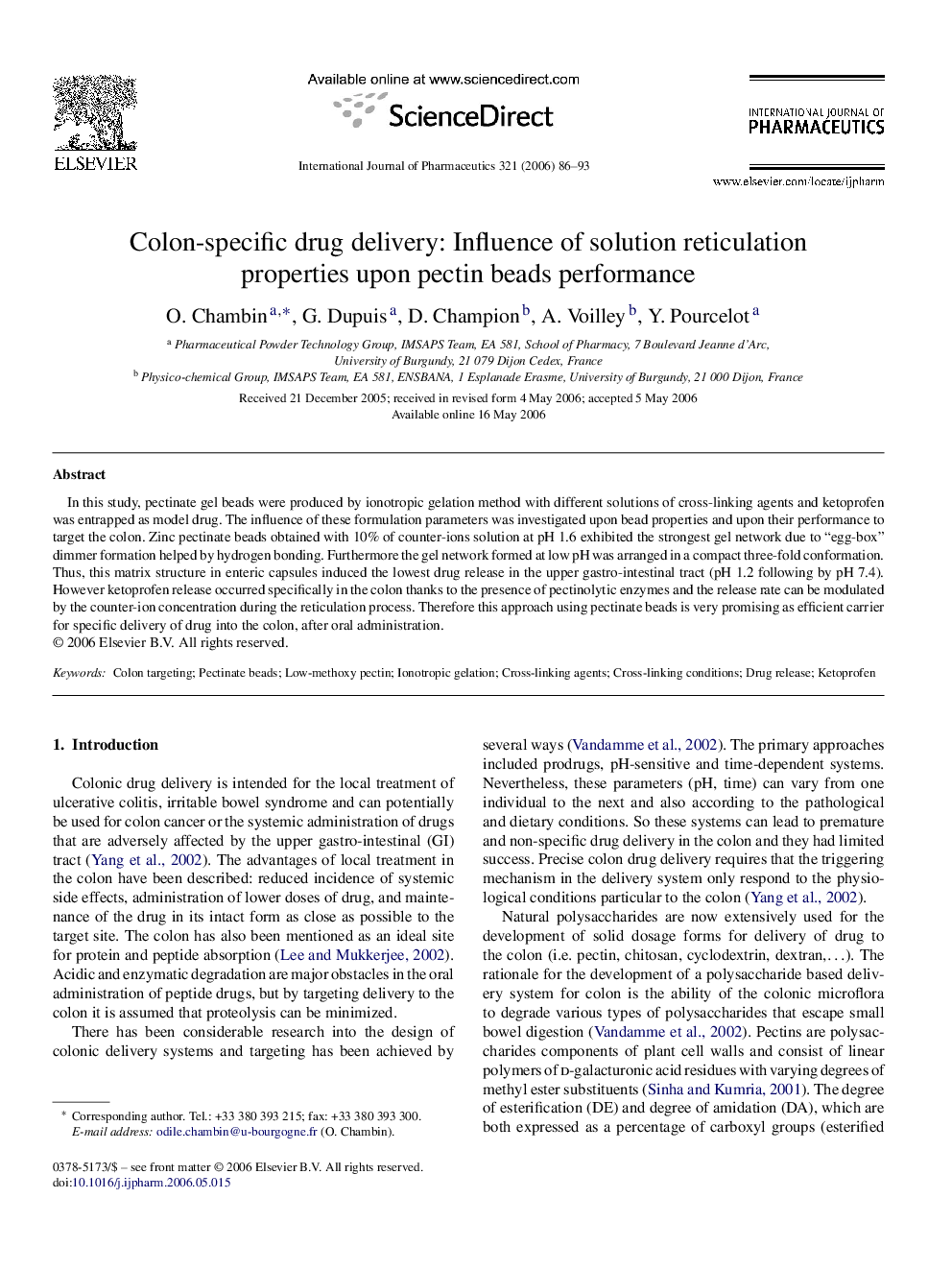| Article ID | Journal | Published Year | Pages | File Type |
|---|---|---|---|---|
| 2506641 | International Journal of Pharmaceutics | 2006 | 8 Pages |
In this study, pectinate gel beads were produced by ionotropic gelation method with different solutions of cross-linking agents and ketoprofen was entrapped as model drug. The influence of these formulation parameters was investigated upon bead properties and upon their performance to target the colon. Zinc pectinate beads obtained with 10% of counter-ions solution at pH 1.6 exhibited the strongest gel network due to “egg-box” dimmer formation helped by hydrogen bonding. Furthermore the gel network formed at low pH was arranged in a compact three-fold conformation. Thus, this matrix structure in enteric capsules induced the lowest drug release in the upper gastro-intestinal tract (pH 1.2 following by pH 7.4). However ketoprofen release occurred specifically in the colon thanks to the presence of pectinolytic enzymes and the release rate can be modulated by the counter-ion concentration during the reticulation process. Therefore this approach using pectinate beads is very promising as efficient carrier for specific delivery of drug into the colon, after oral administration.
